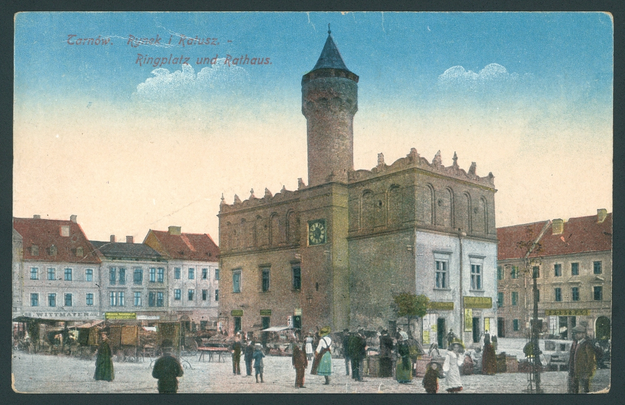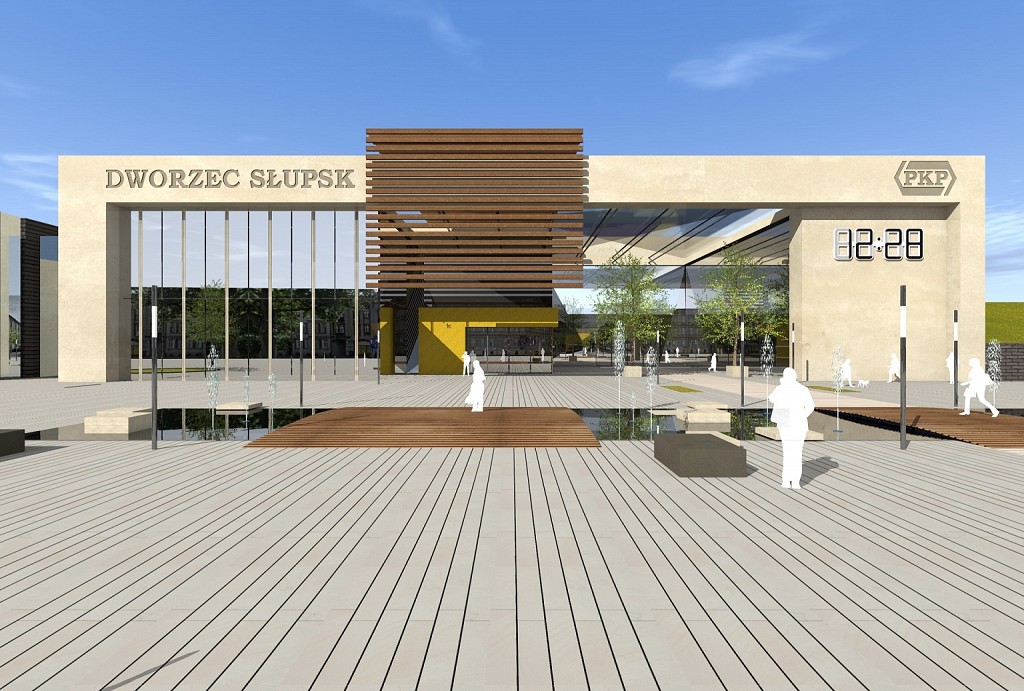|
|
Post by Bonobo on Nov 11, 2018 17:54:51 GMT 1
|
|
|
|
Post by Bonobo on Nov 11, 2018 20:37:33 GMT 1
|
|
|
|
Post by Bonobo on Nov 26, 2018 1:37:14 GMT 1
|
|
|
|
Post by Bonobo on Nov 26, 2018 23:19:28 GMT 1
|
|
|
|
Post by jeanne on Nov 28, 2018 1:10:48 GMT 1
You may find it amusing, but in a lot of these "then and now" comparisons, I prefer the past views!  |
|
|
|
Post by Bonobo on Nov 28, 2018 21:02:04 GMT 1
You may find it amusing, but in a lot of these "then and now" comparisons, I prefer the past views!  I prefer to think otherwise, making an exception only to places destroyed during WW2 and then rebuilt with dull communist architecture. Why today is better? In past times, people had less money and resources to take proper care of the esthetic side of their neighbourhoods, that is why they often look so drab and grey in those old postcards or photos. Look again - we can`t blame the technology of the time for not rendering proper colours in that old postcard - let`s be honest - those buildings hadn`t been redecorated for decades.   You should remember that I must gloat over vivid colours to get rid of my depressive feelings. I can see them in contemporary photos. Also, some photos prove that certain structures look more sophisticated after 100 years. That is also a matter of money. Żelechów`s Town Hall has been restored recently  What happened to the Town Hall in the first photo? I suppose it got partly burnt at some time of the town`s history, I do not even mean the war, just an accidental fire. They saved the ground and first floor but decided to postpone/delay the full restoration, probably due to financial shortages. Today it is not a problem anymore. |
|
|
|
Post by Bonobo on Nov 29, 2018 0:09:48 GMT 1
|
|
|
|
Post by jeanne on Dec 1, 2018 0:09:47 GMT 1
You may find it amusing, but in a lot of these "then and now" comparisons, I prefer the past views!  I prefer to think otherwise, making an exception only to places destroyed during WW2 and then rebuilt with dull communist architecture. Why today is better? In past times, people had less money and resources to take proper care of the esthetic side of their neighbourhoods, that is why they often look so drab and grey in those old postcards or photos. Look again - we can`t blame the technology of the time for not rendering proper colours in that old postcard - let`s be honest - those buildings hadn`t been redecorated for decades. Yes, yes, I see your point, but in my own defense I wonder how much poor, early photography contributes to the shabby appearance of the buildings on the old post cards! |
|
|
|
Post by Bonobo on Dec 1, 2018 21:37:35 GMT 1
but in my own defense I wonder how much poor, early photography contributes to the shabby appearance of the buildings on the old post cards! I already took it into consideration. Shabby facades remain shabby no matter what photo technology you employ.   Ok, there might be a few exceptions, though.  Katowice   |
|
|
|
Post by Bonobo on Dec 1, 2018 22:10:38 GMT 1
|
|
|
|
Post by Bonobo on Dec 1, 2018 23:53:51 GMT 1
I prefer to think otherwise, making an exception only to places destroyed during WW2 and then rebuilt with dull communist architecture. E.g., Słupsk   But they are thinking of replacing it with  |
|
|
|
Post by Bonobo on Dec 15, 2018 21:01:10 GMT 1
|
|
|
|
Post by franciszek on Jan 4, 2019 18:17:52 GMT 1
The old town of Warsaw looks stunning cannot wait to get my camera and tripod there and do it and the people that live there the justice it deseves
|
|
|
|
Post by Bonobo on Jan 8, 2019 23:13:08 GMT 1
|
|
|
|
Post by Bonobo on Apr 19, 2019 17:09:00 GMT 1
|
|
|
|
Post by Bonobo on Apr 23, 2019 19:52:31 GMT 1
Warsaw Tsarist Russian Orthodox church,   pulled down after WW1   |
|
|
|
Post by jeanne on Apr 23, 2019 23:15:51 GMT 1
Warsa  What is going on here? What is the connection to "Poland 1918 and today?" I know you posted it for a reason, but the reason is not clear to me!!  Is this empty area possibly where the Russian Orthodox church stood? |
|
|
|
Post by Bonobo on Apr 24, 2019 17:03:08 GMT 1
[ Is this empty area possibly where the Russian Orthodox church stood? Of course, that`s the idea behind this thread, to show the same places in 1918 and today. If you look at the building on the left, you can see it is in both pics. As for the ceremony, the place is called Piłsudski Square, the one who defeated Soviet Russians in 1920. Thus we have achieved a nice contrast of two completely different historical contexts. Besides, behind the photographer or us as viewers, there is the Tomb of the Unknown Soldier, a sacred place in whole Poland. Although I do regret they knocked that building down, they could have converted it into a Catholic church, I like its architecture. But tsarist Russians built it as a symbol of their imperial domination over Poles so it is obvious it couldn`t stay in an independent Poland. pl.wikipedia.org/wiki/Sob%C3%B3r_%C5%9Bw._Aleksandra_Newskiego_w_Warszawie
The Alexander Nevsky Cathedral (Polish: Sobór św. Aleksandra Newskiego, Russian: Александро-Невский собор) was a Russian Orthodox Cathedral in Saxon Square[1] built in Warsaw, Poland, then a part of the Russian Empire. The cathedral was designed by distinguished Russian architect Leon Benois, and was built between 1894 and 1912. When it was finally completed, it was 70 metres in height, at that time, the tallest building in Warsaw.
It was demolished in mid-1920s by the Polish authorities less than 15 years after its construction. The negative connotations in Poland associated with Russian imperial policy towards Poland, and belief it was built purposely to hurt Polish national feelings,[2] was cited as the major motive by the proponents of the demolition, especially since the church occupied one of Warsaw's main squares. The cathedral shared the fate of many Orthodox churches demolished after Poland regained its independence from Russia
|
|
|
|
Post by jeanne on Apr 24, 2019 19:49:40 GMT 1
Although I do regret they knocked that building down, they could have converted it into a Catholic church, I like its architecture. But tsarist Russians built it as a symbol of their imperial domination over Poles so it is obvious it couldn`t stay in an independent Poland. Yes, it was a beautiful building...and only 15 years old when demolished! It's totally understandable, though, why the Polish people wanted it removed... |
|
|
|
Post by Bonobo on Apr 24, 2019 20:49:35 GMT 1
Yes, it was a beautiful building...and only 15 years old when demolished! It's totally understandable, though, why the Polish people wanted it removed... The Polish wiki offers more info than English one, there were a few notable Poles, e.g. writers, who tried to save the church. But their opponents prevailed with these arguments: - symbol of Russian domination (during the construction Russians openly admitted it was meant as such) - Eastern style architecture didn`t match Warsaw`s then - the church occupied an important square in central Warsaw. I compared the two photos again - the photographer was standing directly on the non-existent front steps leading to the church or within its entrance. Some parts were used to enrich Polish architecture elsewhere, e.g., these columns over Wawel Castle Cathedral crypt where Lech Kaczyński is buried.  |
|
|
|
Post by jeanne on Apr 30, 2019 21:55:20 GMT 1
Some parts were used to enrich Polish architecture elsewhere, e.g., these columns over Wawel Castle Cathedral crypt where Lech Kaczyński is buried. Aha...yes, re-purposing elements of beautiful architecture is an excellent way of softening the destruction of a beautiful, yet offensive, building! Good job, Poles!...yet again!  |
|
|
|
Post by Bonobo on May 1, 2019 10:36:42 GMT 1
Some parts were used to enrich Polish architecture elsewhere, e.g., these columns over Wawel Castle Cathedral crypt where Lech Kaczyński is buried. Aha...yes, re-purposing elements of beautiful architecture is an excellent way of softening the destruction of a beautiful, yet offensive, building! Good job, Poles!...yet again!  I am afraid the motive behind those columns was achieving a sort of revenge on the oppressors.   |
|
|
|
Post by Bonobo on May 1, 2019 11:29:00 GMT 1
|
|
|
|
Post by Bonobo on Aug 14, 2019 15:33:07 GMT 1
|
|
|
|
Post by Bonobo on Nov 16, 2019 22:18:55 GMT 1
|
|
|
|
Post by Bonobo on Dec 1, 2019 22:14:02 GMT 1
Countryside areas around towns and cities have changed the most due to urban sprawl:   |
|
|
|
Post by jeanne on Dec 3, 2019 0:36:16 GMT 1
What city is this urban sprawl a part of, and do you know when these were built? They aren't part of the communist construction are they? They don't have that depressing look to them...
|
|
|
|
Post by Bonobo on Dec 3, 2019 22:05:52 GMT 1
|
|
|
|
Post by jeanne on Dec 4, 2019 0:02:04 GMT 1
How about Łódź? The last three photos show the estate called Manhattan built 1975-1982.   I'm amused that they called it "Manhattan!"  |
|
|
|
Post by Bonobo on Dec 4, 2019 22:28:58 GMT 1
I'm amused that they called it "Manhattan!"  I have heard that name in other places in Poland, too. It seems all communist estates which were taller than regular were informally called Manhattans. Sort of revenge on communists....  Ustroń Zdrój, Manhattan    |
|